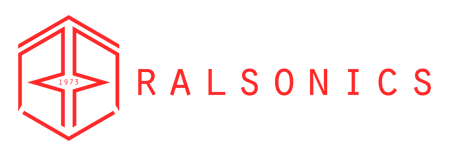26 Jul Are vapor degreasers eco-friendly?
Reading Time: 4 minutesIn today’s world, environmental sustainability and minimizing the carbon footprint have become critical considerations in various industries. When it comes to industrial cleaning methods, the use of vapor degreasers has gained popularity due to their efficiency and effectiveness. However, it is important to assess their environmental impact and determine whether they are truly eco-friendly. In this blog post, we will explore the environmental aspects of vapor degreasers, examining their benefits, potential concerns, and steps taken to mitigate their impact.
Benefits of Vapor Degreasers:
Vapor degreasers provide several benefits that contribute to their popularity in industrial applications. Lets explore some of these advantages:
1. Non-Abrasive Cleaning:
Vapor degreasers provide non-abrasive cleaning, which is especially important for delicate or sensitive materials. Unlike some mechanical cleaning methods that may cause scratches or damage to surfaces, vapor degreasers use solvent vapors to gently dissolve contaminants
without compromising the integrity of the parts or components being cleaned.
2. Versatile Application:
Vapor degreasers can be utilized for a wide range of cleaning applications beyond removing grease and oil. They are effective in removing flux residues from soldering processes, stripping coatings or paint, degassing materials, and even disinfecting surfaces. This versatility makes vapor degreasers a versatile tool in various industries, allowing for multiple cleaning requirements to be addressed with a single system.
3. Enhanced Surface Preparation:
In addition to cleaning, vapor degreasers can also improve surface preparation for subsequent processes. By removing contaminants thoroughly, vapor degreasers create a clean and pristine surface, ensuring optimal adhesion for coatings, paints, adhesives, and other materials applied to the treated surfaces. This results in improved product quality and performance.
4. Increased Product Lifespan:
Regular and effective cleaning with vapor degreasers can extend the lifespan of parts and components. By removing contaminants that can lead to corrosion, oxidation, or degradation, vapor degreasers help prevent premature wear and damage, resulting in longer-lasting
products. This benefit is particularly important in industries where reliability and durability are critical, such as aerospace, automotive, and electronics.
5. Efficient Removal of Difficult Contaminants:
Vapor degreasers excel at removing difficult-to-clean contaminants that may be resistant to other cleaning methods. This includes heavy oils, waxes, stubborn residues, and even certain types of adhesives or sealants. The solvency power of the cleaning agents used in vapor
degreasers allows for effective dissolution and removal of these challenging contaminants, ensuring a thorough and complete cleaning process.
6. Closed-Loop Systems:
Modern vapor degreasers are often equipped with closed-loop systems that help minimize solvent loss and emissions. These systems ensure that the solvent remains contained within the cleaning process, reducing the environmental impact.
These additional benefits highlight the versatility, effectiveness, and long-term advantages of using vapor degreasers in industrial cleaning applications. Whether it’s providing non-abrasive cleaning, preparing surfaces, extending product lifespan, or tackling challenging contaminants, vapor degreasers offer comprehensive solutions to meet diverse cleaning needs.
Mitigating the Environmental Impact:
To address the environmental concerns associated with vapor degreasers, significant efforts have been made to mitigate their impact. Let’s discuss some of the measures taken to enhance their eco-friendliness:
1. Solvent Substitution:
One effective approach to reducing the environmental impact of vapor degreasers is to replace chlorinated solvents with less harmful alternatives. Non-chlorinated solvents such as hydrocarbons and fluorinated fluids are increasingly being used as replacements. These
solvents have lower toxicity and a reduced environmental impact while maintaining effective cleaning performance.
2. Solvent Recycling and Recovery
To minimize solvent consumption and waste generation, vapor degreasers are equipped with solvent recycling and recovery systems. These systems collect, purify, and reuse the solvent, significantly reducing the overall solvent usage and environmental footprint.
3. Closed-Loop Systems:
Modern vapor degreasers often incorporate closed-loop systems that prevent solvent release into the atmosphere. These systems include air-tight seals, refrigeration units for condensation and solvent recovery, and proper ventilation to control emissions effectively. Closed-loop systems help reduce VOC emissions and minimize solvent loss, enhancing environmental sustainability.
4. Regulatory Compliance:
Stringent regulations and guidelines are in place to monitor and control the use of solvents and emissions from vapor degreasers. Compliance with regulations such as the Environmental Protection Agency (EPA) standards ensures that the use of vapor degreasers aligns with environmental protection goals and reduces potential harm.
5. Employee Safety Measures:
In addition to environmental concerns, the health and safety of workers handling vapor degreasers are of utmost importance. Proper training, personal protective equipment, and monitoring of exposure levels are crucial to ensuring the well-being of employees and
minimizing any potential health risks.
Conclusion:
Vapor degreasers offer efficient and effective cleaning solutions for industries, but it is important to consider their environmental impact. Through the adoption of solvent substitution, solvent recycling and recovery systems, closed-loop designs, regulatory compliance, and employee safety measures, the environmental impact of vapor degreasers can be mitigated. As technology and regulations continue to evolve, vapor degreasers are becoming increasingly eco-friendly, aligning with the goals of sustainability and environmental protection.
If you enjoyed reading this blog and would like to read more of our blogs, here are a few recommendations:
- Sonication for pharmaceutical solutions
- Ultrasonic filter cleaning
- The future of ultrasonic cleaning technology
- Understanding ultrasonic homogenization and emulsification
Ralsonics has been in business with this technology for over 49 years. Ralsonics provides a full array of vapor degreasers along with ultrasonic cleaners, resonators, and sonicators. With the company’s ability to design and build its own equipment, the products can be customized to meet specific requirements. Why the delay? Contact Us today!



No Comments